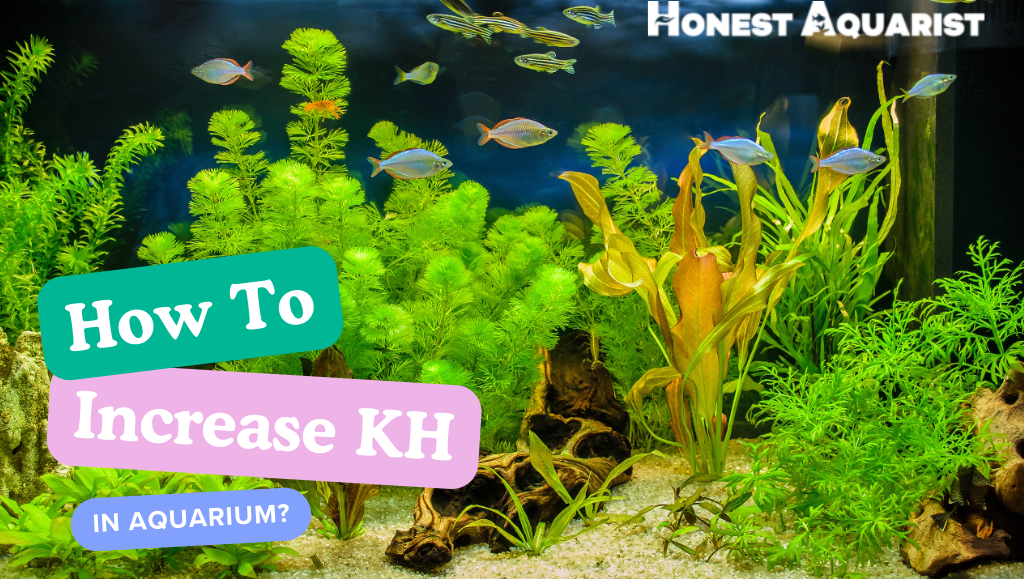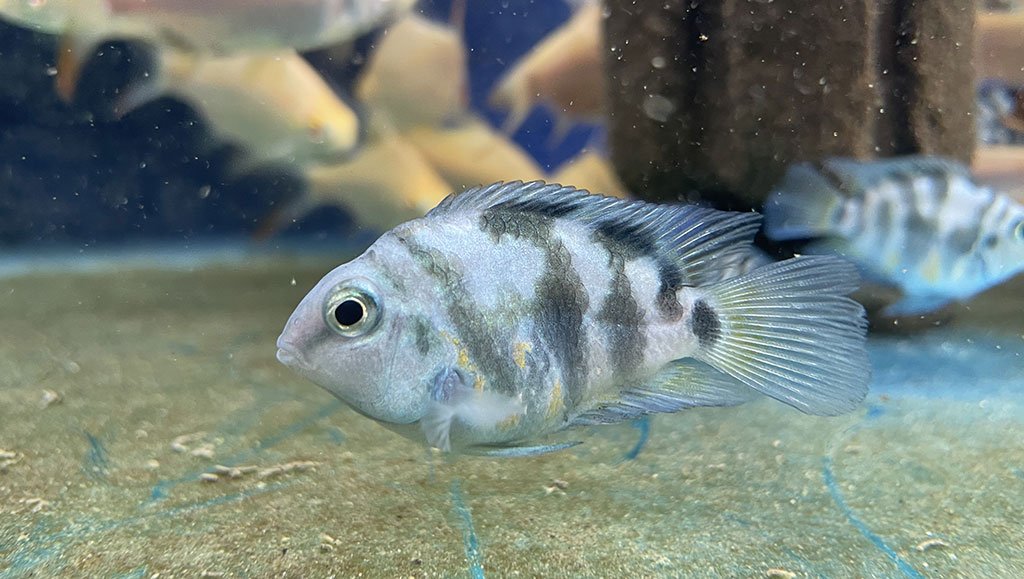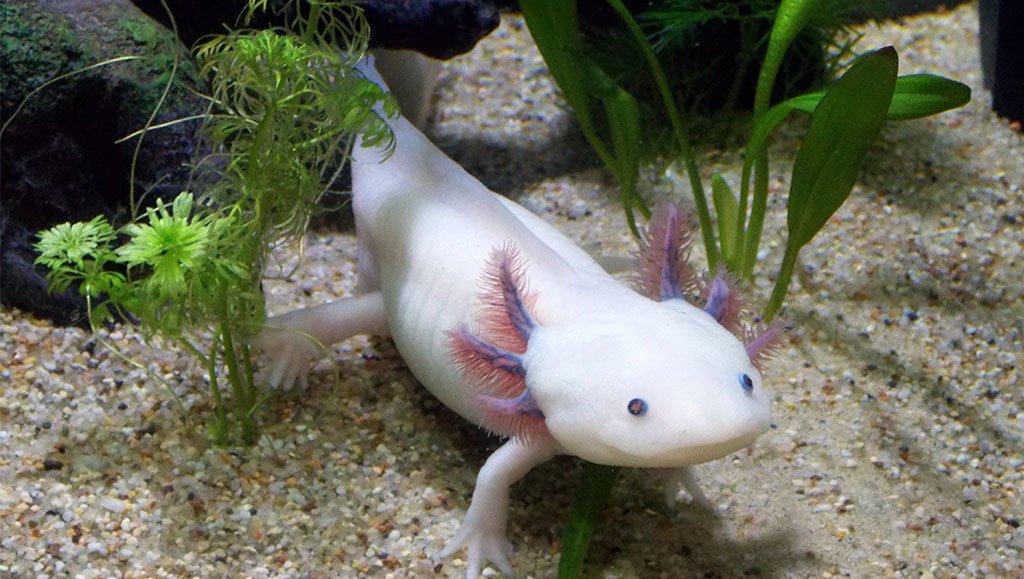In my years of maintaining aquariums and nurturing the life within them, I’ve come to understand the pivotal role of water chemistry in aquatic environments. One aspect that is often overlooked yet crucial for the well-being of your aquatic friends is the carbonate hardness (KH) level in your aquarium.
This article is born from my experience and the collective wisdom of fellow aquarists who have navigated the complexities of managing KH levels. Here, I will guide you through the importance of maintaining the right KH level in your aquarium, and more importantly, I will share detailed, authoritative insights on how to increase KH in aquarium safely and effectively.
You will learn about various methods to adjust the KH level, from the simple addition of baking soda to more sophisticated approaches like using commercial KH buffers. My goal is to empower you with knowledge and techniques that will not only ensure a healthy aquatic environment but also enhance your confidence and satisfaction as an aquarium keeper.
Key Takeaways
- Start Slow and Steady: The most significant piece of advice I can give is to never rush the process. Incremental changes are less shocking to your aquatic ecosystem than sudden shifts.
- Invest in Quality Testing Kits: Accurate readings are foundational. A reliable water testing kit is indispensable for monitoring KH, pH, and other parameters effectively.
- Consult the Experts: Leverage the immense pool of knowledge that experienced aquarists and professionals offer. Their insights can save you time and prevent costly mistakes.
- Understand Your Aquatic Life’s Needs: Tailor your water chemistry to the specific requirements of your aquarium’s inhabitants. What works for a freshwater setup may not suit a marine one, and vice versa.
- Regular Monitoring and Adjustment: Conditions within your aquarium will evolve. Consistent testing allows you to adapt to these changes and maintain optimal water quality.
- Use Quality KH Buffers: When adjusting KH levels, choose buffers specifically designed for aquariums. They’re more reliable and safer for your aquatic life.
- Learn from Every Action: Lastly, each adjustment you make is an opportunity to learn. Document what works and what doesn’t. Over time, you’ll develop a finely tuned sense for managing your aquarium’s KH levels.
Understanding Carbonate Hardness (KH)
In my journey through aquaristics, grappling with the nuances of water chemistry was both a challenge and a revelation. The concept of Carbonate Hardness (KH), or alkalinity, was one aspect that truly unlocked a deeper understanding of what it takes to sustain a thriving aquatic ecosystem. Allow me to unpack this critical parameter through my personal lens and experience.
A. Definition and Role of KH in Water Chemistry
Carbonate Hardness (KH) measures the concentration of carbonate and bicarbonate ions in water. From my experience, imagine KH as the stabilizing force within your aquarium’s environment. It’s akin to a buffer, protecting the ecosystem from drastic pH swings that can be detrimental to the health of fish and plants. When I first grasped this, it became evident why monitoring and maintaining the correct KH levels is fundamental for aquarium stability.
B. Relationship Between KH, pH, and CO2 Levels
The interplay between KH, pH, and CO2 levels in an aquarium is a delicate dance that can often seem complex. Initially, it was a puzzle, but over time, I’ve learned that KH directly influences pH stability. A higher KH level means more resistance to pH changes, offering a stable environment for your aquatic life. This stability is particularly crucial in tanks with CO2 injection for plant growth, as CO2 lowers pH levels. Understanding and managing this relationship is key to maintaining a balanced aquarium.
C. Ideal KH Levels for Different Types of Aquariums
Determining the ideal KH level depends largely on the inhabitants of your tank. For instance, in my freshwater tanks housing Amazonian species that prefer soft, acidic water, I aim for a lower KH, around 3 to 5 dKH. Conversely, for African cichlid tanks, which thrive in hard, alkaline waters, a KH of 8 to 12 dKH is more suitable. The realization that there’s no one-size-fits-all KH level was crucial in tailoring my approach to each unique aquatic ecosystem.
D. Signs of Fluctuating KH Levels
Throughout my time caring for various tanks, I’ve learned to recognize the signs of fluctuating KH levels. Fish showing signs of stress, such as lethargy or loss of appetite, and a sudden decline in plant health were my initial indicators that the water chemistry might be off. These observations often prompted me to test and adjust the KH level accordingly, underscoring the importance of vigilance and proactive management.
E. Monitoring and Testing KH Levels
Proactive monitoring has been my mantra in maintaining the perfect KH balance. I use test kits regularly, aiming for weekly checks, to ensure that the KH remains within the desired range. This routine testing is akin to taking the pulse of your aquarium, offering insights into its health and providing the opportunity to prevent issues before they escalate.
Reasons for Low KH in Aquariums
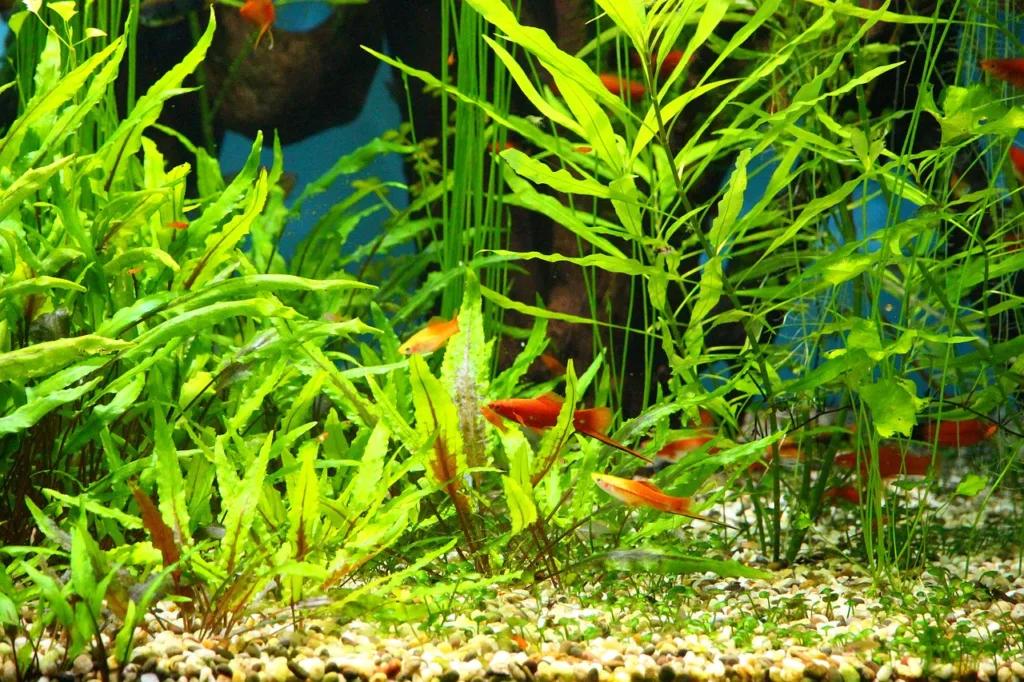
In my extensive experience with aquariums, I’ve encountered numerous instances where the KH levels have dipped lower than what is considered healthy for the aquatic ecosystem. Understanding the causes of these reductions can be instrumental in taking corrective action. Here, I’ll elucidate the common reasons, grounded in personal observations and corrective measures I’ve had to employ over the years.
A. Natural Causes (e.g., Soft Water Source)
One of the most fundamental reasons for naturally low KH levels in an aquarium is the use of a soft water source. In my early days of aquaristics, I was caught off-guard by how the inherent characteristics of the water I used directly influenced the KH level. Tap water in some regions, for example, is naturally soft with low mineral content, including carbonates and bicarbonates, which are essential for maintaining KH. Recognizing this was pivotal; it led me to explore water sources and their chemistry before using them in my tanks.
B. Biological Processes (e.g., Decomposition)
Another revelation in my aquarium-keeping venture was the impact of natural biological processes on KH levels. The decomposition of organic matter, such as uneaten food, plant debris, and fish waste, produces acids that can deplete carbonate hardness. Observing the slow but steady decrease in KH in heavily planted tanks or tanks with a high bioload underscored the importance of regular maintenance and monitoring.
C. Use of Certain Aquarium Substrates and Decorations
Choosing substrates and decorations based on aesthetics alone was a mistake I learned from quickly. Some materials, particularly those designed for specific types of biotopes like Amazonian or Southeast Asian, actively soften water, reducing KH. Driftwood, peat moss, and certain types of leaves are natural, decorative elements that I’ve observed not just enhance the visual appeal but also have significant chemical impacts on water parameters.
D. Overuse of CO2 Injection
In pursuit of lush, vibrant plant growth, the use of CO2 injection systems became a part of my routine. However, I soon noticed an unintended consequence—overuse of CO2 can lead to a drop in KH levels. This is because carbon dioxide, when dissolved in water, forms carbonic acid, which reacts with carbonate ions, reducing the KH. Balancing CO2 levels to promote plant growth without compromising KH became a nuanced skill I had to master.
E. Incorrect Water Change Practices
Finally, inconsistent or incorrect water change practices contributed to fluctuating KH levels in some of my tanks. Either neglecting regular water changes or using water with differing KH levels for changes caused more harm than good. This experience taught me the importance of regular, consistent water changes with pre-tested water to maintain stable parameters.
Methods to Increase KH in Aquariums
Having navigated the complexities of maintaining ideal KH levels in my aquariums, I’ve come to rely on several effective methods to increase carbonate hardness when necessary. Each method has its pros and cons, and I’ve learned to choose based on the specific needs of my aquarium and its inhabitants. Here’s a rundown of the techniques I’ve found most reliable:
A. Use of Commercial KH Buffers and Additives
In my quest for stable KH levels, commercial KH buffers and additives have often been my go-to solution. These products are formulated to safely raise the KH, and I’ve found them incredibly effective for quick adjustments. However, it’s crucial not to overdo it; I always follow the recommended dosages closely to avoid sudden, drastic changes that could stress aquatic life.
B. Incorporating Crushed Coral or Limestone in the Substrate
For a more natural approach, adding crushed coral or limestone to the aquarium substrate has yielded positive results. These materials slowly release carbonate into the water, gradually increasing KH. This method is especially useful in my African cichlid tanks, where higher hardness levels are preferred. It’s been a game-changer in creating a stable environment that mimics their natural habitat.
C. Adding Baking Soda or Sodium Bicarbonate to the Water
A more household remedy I’ve employed is the use of baking soda (sodium bicarbonate) to slightly increase KH levels. It’s a cost-effective method I reserve for minor adjustments. The key here is moderation; adding too much too quickly can shock the tank inhabitants. I’ve learned to dissolve the correct amount in water before gradually introducing it to the tank.
D. Utilizing Dolomite Chips in the Filter
My exploration into KH management also led me to discover the benefits of placing dolomite chips in the aquarium filter. This method offers a slow-release mechanism for increasing carbonate hardness, with the added benefit of elevating magnesium levels, which are beneficial for the overall mineral balance in the water.
E. Implementing Water Changes with Harder Water
Alternating water sources has been another strategy of mine. When my aquariums require a KH boost, I sometimes perform water changes using harder water. This technique involves careful planning and testing, as it’s essential to ensure the new water’s parameters are compatible with my aquarium’s needs.
Step-by-Step Guide to Increasing KH in Your Aquarium
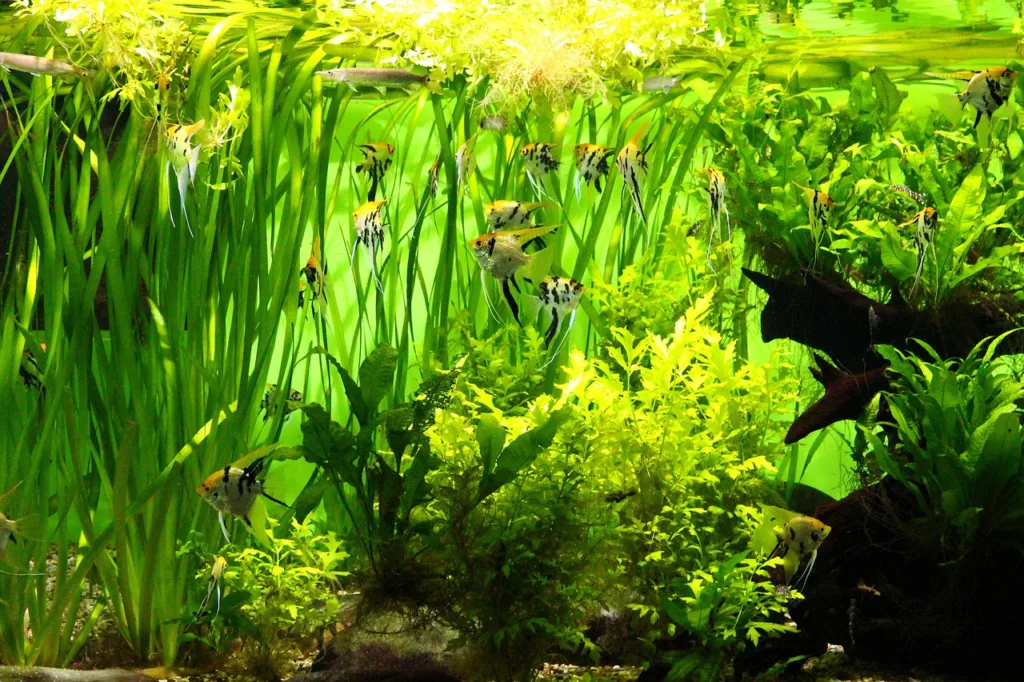
Over the years, I’ve refined a systematic approach to adjusting the KH levels in my aquariums. This process is a culmination of my personal experiences and the lessons I’ve learned along the way. I’ll walk you through each step to help you elevate your aquarium’s KH to the desired range effectively and safely.
A. Testing KH Levels Using a Reliable Test Kit
The first step, and a critical one, is accurately testing your current KH levels. For this, I use a reliable aquarium test kit designed for measuring carbonate hardness. It’s essential to follow the instructions meticulously to get an accurate reading. Bear in mind, KH levels should be regularly monitored, especially before and after making any changes. This not only helps you understand your aquarium’s needs but also prevents any drastic fluctuations that could harm your aquatic life.
B. Selecting the Appropriate Method Based on Aquarium Size and Current KH Levels
Once you have a clear picture of your aquarium’s current KH level, the next step is selecting the most suitable method for adjustment. This choice largely depends on two factors: the size of your aquarium and the magnitude of KH adjustment needed. For subtle increases, I’ve often relied on adding baking soda; for more substantial requirements, incorporating crushed coral into the substrate has been my go-to. Each aquarium is unique, and what works for one might not work for another.
C. Gradually Adjusting KH Levels to Reach the Desired Range
The phrase “slow and steady” has never been more applicable than when adjusting the KH levels in an aquarium. Sudden changes can profoundly stress or even kill your aquatic inhabitants. Therefore, whatever method you choose, it’s crucial to implement the changes gradually. For instance, if using baking soda, add the predetermined amount slowly over several days or even weeks, depending on the adjustments needed. Regular testing during this period is vital to monitor progress and prevent overshooting your target KH level.
D. Monitoring and Maintaining the Desired KH Levels
After reaching the desired KH level, the work isn’t over. Maintaining stability in your aquarium’s KH is crucial for the well-being of your aquatic life. Continue to test the KH levels regularly and be prepared to make minor adjustments as needed. Factors such as water changes, evaporation, and biological processes can all influence KH levels over time.
E. Documenting Changes and Observations for Future Reference
Lastly, I cannot overstate the importance of keeping detailed records of all changes made and their outcomes. Documenting the starting KH level, the method used for adjustment, the amount and frequency of adjustments, and the resultant KH levels over time will be incredibly valuable. This personalized log will not only help you manage your current aquarium more effectively but also serve as a golden resource for any future aquarium ventures.
Monitoring and Maintaining KH Levels
Maintaining the optimal KH levels in your aquarium is not a “set it and forget it” task. It requires continuous observation and adjustment to ensure the stability and health of your aquatic environment. Here are the strategies I’ve developed over the years, based on my own experiences:
A. Regular Testing and Monitoring of KH Levels
The cornerstone of maintaining stable KH levels is the regular testing of your aquarium water. I schedule weekly tests, using a reliable KH test kit, to keep a close watch on the carbonate hardness. This frequent monitoring allows me to catch any fluctuations early on, before they can impact the delicate balance of my aquarium ecosystem. Consistent testing has been key in my successful management of KH levels, ensuring that my aquatic inhabitants thrive.
B. Adjusting Water Changes and Additives as Needed
Depending on the results of my weekly tests, I adjust my maintenance routines accordingly. If I notice a drop in KH levels, I might increase the frequency of water changes with harder water or add a bit more of the KH buffer. On the other hand, if the levels are higher than needed, I’ll adjust by using softer water for my changes or temporarily halting the addition of any KH-increasing substances. It’s all about finding and maintaining that delicate balance through careful adjustments.
C. Observing for Signs of Stress or Imbalance in Aquarium Inhabitants
Another vital aspect of monitoring is keeping an eye on the behavior and health of my aquarium inhabitants. Signs of stress or discomfort in fish and other aquatic life can often be an early warning system for water parameters being off, including KH levels. If I notice anything unusual, such as reduced activity or poor appetite, I conduct a comprehensive testing of the water parameters to identify and rectify any issues promptly.
D. Preparing for External Factors that Affect KH Levels
It’s also important to consider and prepare for external factors that may influence your aquarium’s KH levels. Seasonal changes, such as increased evaporation in warmer months, or the introduction of decorations or substrates that can alter water chemistry, all need to be accounted for. Adapting your maintenance strategy to these factors can help in maintaining KH stability throughout the year.
E. Incorporating Feedback Loops
Creating a feedback loop where the results of your actions inform your next steps is crucial. If, after adjusting water changes or additives, I see positive changes in the KH levels and overall health of my aquarium, I note what worked for future reference. Conversely, if changes do not yield the expected results, I reevaluate and adjust my approach. This process of observing, acting, and learning from each action helps in fine-tuning my maintenance routine for optimal KH levels.
Precautions and Considerations
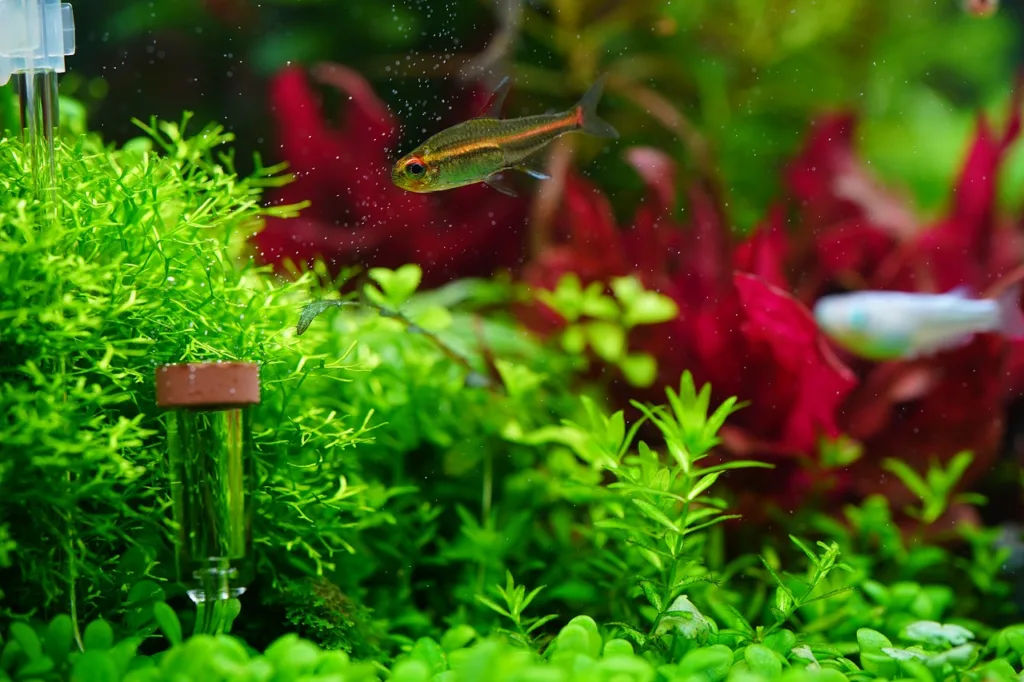
Maintaining the optimal KH levels in your aquarium involves a delicate balancing act, and there are several precautions and considerations you should keep in mind. Drawing from my experience, I’ve identified key areas that need careful attention:
A. Avoiding Sudden and Drastic Changes in KH Levels
One of the most critical lessons I’ve learned is the importance of avoiding sudden and drastic changes in KH levels. Such abrupt alterations can shock and seriously harm your aquatic life. When I adjusted my aquarium’s KH levels, ensuring the process was gradual and controlled was paramount. Incremental adjustments over days or weeks, rather than all at once, can prevent stress and promote the health and stability of your ecosystem.
B. Considering the Impact on pH and Other Water Parameters
It’s also essential to be mindful of how changes in KH levels can affect pH and other water parameters. In my experience, adjusting KH can lead to shifts in pH levels, which can further influence the overall health of the aquarium. Therefore, when modifying KH levels, I also monitor pH closely to avoid creating an inhospitable environment for my aquatic friends. Understanding the interplay between different water parameters can guide you in making more informed decisions.
C. Consulting with Experienced Aquarists or Professionals for Guidance
I cannot overemphasize the value of seeking advice from experienced aquarists or professionals. Their insights and advice have been invaluable in my own aquarium management, offering perspective and solutions that I might not have considered. Whether it’s troubleshooting specific issues or planning significant changes, tapping into the wealth of knowledge from seasoned experts can dramatically improve your outcomes.
D. Tailoring Adjustments to the Specific Needs of Your Aquatic Inhabitants
Each aquarium is a unique ecosystem, and the specific needs of your aquatic inhabitants should guide your actions. I learned early on to consider the natural habitats and preferences of my fish and plants, tailoring KH and pH levels to match those conditions as closely as possible. This consideration ensures a living environment where your aquatic life can thrive, not just survive.
E. Regularly Reevaluating Water Testing and Adjustment Strategies
Finally, it’s crucial to regularly reevaluate your water testing and adjustment strategies. The needs of your aquarium can evolve over time, influenced by factors such as the growth of your aquatic plants and animals or changes in the external environment. By staying flexible and responsive, you can adapt your maintenance practices to meet these changing needs and maintain optimal water conditions.
My Opinion on Increasing KH in Aquariums
From my experience, managing and increasing KH levels in an aquarium is a nuanced task that requires patience, attention to detail, and a willingness to learn continuously. If you ask me for my personal recommendation on how to effectively increase KH, I would stress the importance of gradual adjustments and the use of high-quality KH buffers. Making small, incremental changes over time allows your aquatic inhabitants to acclimate without stress. I’ve found that carefully sourced KH buffers, designed specifically for aquarium use, offer the most reliable means of elevating KH levels while maintaining the health and stability of the water chemistry.
Remember, each aquarium is a world unto itself, reflecting the unique interplay between its inhabitants, their needs, and the environmental conditions. Therefore, it’s crucial to closely monitor the effects of any changes you implement, using precise testing equipment to track the impact on KH, pH, and other vital parameters. In my journey, drawing upon the collective wisdom of the aquarist community and leaning on the experiences of seasoned professionals have been invaluable. But above all, keeping the well-being of my aquatic friends at the forefront of any decision has guided my approach to increasing KH in my aquarium.
